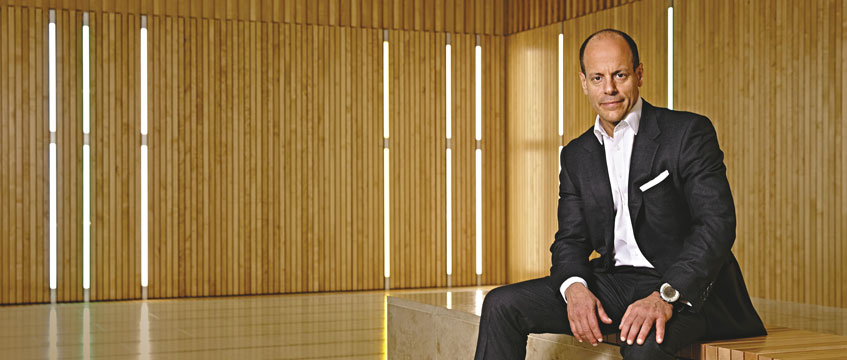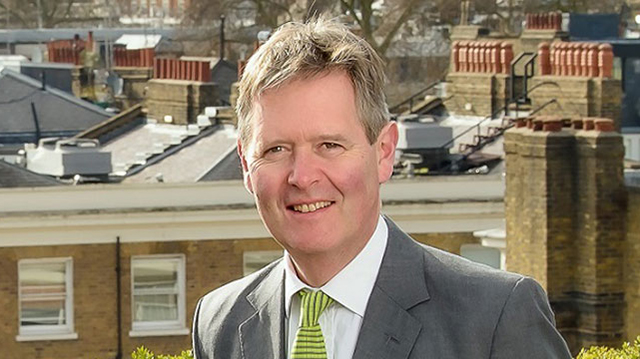The arrival of the convertible mortgage in Britain provides further evidence that the traditional distinctions between property finance and general corporate finance are becoming blurred. Credit Suisse First Boston has taken the plunge on behalf of Stanhope Properties by marketing a £119m convertible mortgage secured on 200 Gray’s Inn Road (shown below).
The concept of a loan convertible into the equity of an enterprise originates in the corporate field. Companies issue convertible stocks as a halfway house between debt and ordinary share capital (equity). Since the convertible bond initially ranks as debt, the interest payments are tax allowable (the dividends on shares would not be). But the company can get away with a much lower interest rate than it would have to concede on straight debt.
Investors accept the lower interest rate because they have the option of converting into shares at a later date — the profit from a rise in the share price can more than compensate for the lost interest. Suppose a company’s shares stand at 100p and yield 4%. If it wanted to raise straight long-term fixed-interest money the company might have to commit itself to paying, say, 13%. But instead it might decide to issue a bond that converts into shares at 115p, carrying an interest rate of 7.5%. There is an immediate cashflow advantage to the company from the lower interest rate. And it can probably convince shareholders that, by pitching the conversion price above the current share price, it is avoiding dilution of its equity. This argument is actually fallacious, but is sufficiently widely accepted to be useful.
Then look at it from the investor’s point of view. He or she guesstimates, say, that the shares will rise in value by 10% a year compound during the next five years. So they will be worth just over 161p in five years’ time. The right to acquire at 115p (the conversion price) a share worth 161p is clearly valuable. With the 7.5% interest received in the interim it represents an annual compound rate of return of around 16.3%.
And this is roughly where we were in thinking about convertibles 10 years ago. But there was a snag. What if the share price failed to rise? Suppose it was still stuck at 100p five years on? In this case the right to acquire a share effectively at 115p would have no value. The investor would have received the 7.5% annual interest and would be considerably worse off than with a straight bond yielding 13%.
But the bankers had an answer, particularly for bond-orientated Euromarket investors. The company would issue a convertible stock on the above terms, but to appeal to traditional bondholders it would offer a double option. Either the bond could be converted into shares or, if the share price did not rise enough, the investor could demand repayment of the bond at a figure above the original issue price. And this would guarantee a return considerably above the 7.5% interest rate.
Suppose the investor could demand repayment of the bond at £125 for every £100 worth after five years. Taken with the 7.5% annual interest, this would represent a compound annual return of 11.5% — a bit below the 13% on a straight corporate bond, but probably around the redemption yield obtainable on a government stock. The company hoped, of course, that the bond would be converted rather than repaid at a premium and that it would have had the use of money at only 7.5%.
Convertible bonds of this kind were known as “premium put convertibles” because the investor had the right to put (sell) them back to the company at a premium. And this is the model chosen by Stanhope and CSFB for property loan.
The biggest problem in property finance is that — even in today’s depressed market — the yield from the rents is likely to be well below the long-term borrowing cost. If we assume, for example, that a property yields the average of 8.7% and assume that long-term fixed-interest money would cost 13%, there will be a 4.3% annual income shortfall if the property is financed on a straight borrowing.
But if the company offers conversion rights into the “equity” of the property, investors will accept a lower current interest rate in return for the chance to share in future growth. This can have particular attractions at a time when property values are bombed out and could rise quite sharply on market recovery.
The Stanhope convertible mortgage, secured on 200 Gray’s Inn Road, pays 7.5% for the first five years of its 10-year life. Then the rate rises to 10% for the remainder — the hope is clearly that the rent review will provide sufficient uplift in income to cover the higher interest. At the 10-year point the investor has the option to convert the mortgage loan into 49.99% of the equity of the property.
Alternatively, the investor can require repayment of the mortgage at £194m for the £119m of the original loan. As with the premium put convertible that can convert into shares, this would provide a far higher return than the mere annual interest — around 12%.
The investor can thus look on the mortgage as a straight loan yielding about 12% and secured on property assets, but with the additional option of benefiting from a substantial rise in property values via the conversion option.
Why had nobody thought of it before? They had: convertible mortgages occur in the US. But there were a number of taxation and legal obstacles to overcome.
The chief legal problem lies in an old-established principle of English law. When a borrower gives a charge on assets in return for a loan — as with a mortgage — he or she should have the right to regain full control of the assets by repaying the loan. This is to prevent unscrupulous lenders from using a charge to grab ownership of a borrower’s assets, even when loan terms are met. Obstacles to repayment — the famous “clog on the equity of redemption” are thus outlawed.
But there are obvious problems if the borrower has the right to repay the loan at any point. The conversion rights would be valueless if the borrower could regain control of his asset simply by redeeming the loan at its face value. Lawyers are confident that ways around this have now been found, however, particularly as the legal concept was evolved to protect weak borrowers rather than to limit major companies and financial institutions which enter into agreements in the full knowledge of their obligations.
Initially, convertible mortgages will almost certainly be marketed to one or two major institutions rather than to a multiplicity of investors. The conversion option means that borrower and lender may be entering into a very long-term partnership, rather than a mere banking arrangement. And even if convertible mortgages are later more widely syndicated, it will probably always be necessary to have one lead investor with the power to make decisions on behalf of the rest. With a bond convertible into shares it is no great matter if some investors decide to convert and others do not. With a property this would be exceedingly messy.
Finally, the investor needs to weigh the strengths and weaknesses of the convertible mortgage against a straight mortgage and against the corporate bond which converts into shares. The convertible mortgage offers security; a convertible bond is usually unsecured. But — in the Stanhope case — the convertible represents an estimated 86% of the property’s current value, which is a considerably higher loan-to-value ratio than would normally be acceptable with a straight mortgage.
And though a bond convertible into shares is normally unsecured, it is backed by the full resources of the issuing company. The Stanhope convertible mortgage is non-recourse or limited recourse, and therefore backed by the single property rather than by Stanhope’s corporate covenant. The option of repayment at a premium is thus dependent on growth in the value of the property. At best, it will be some time before the market fully evaluates the pros and cons.










